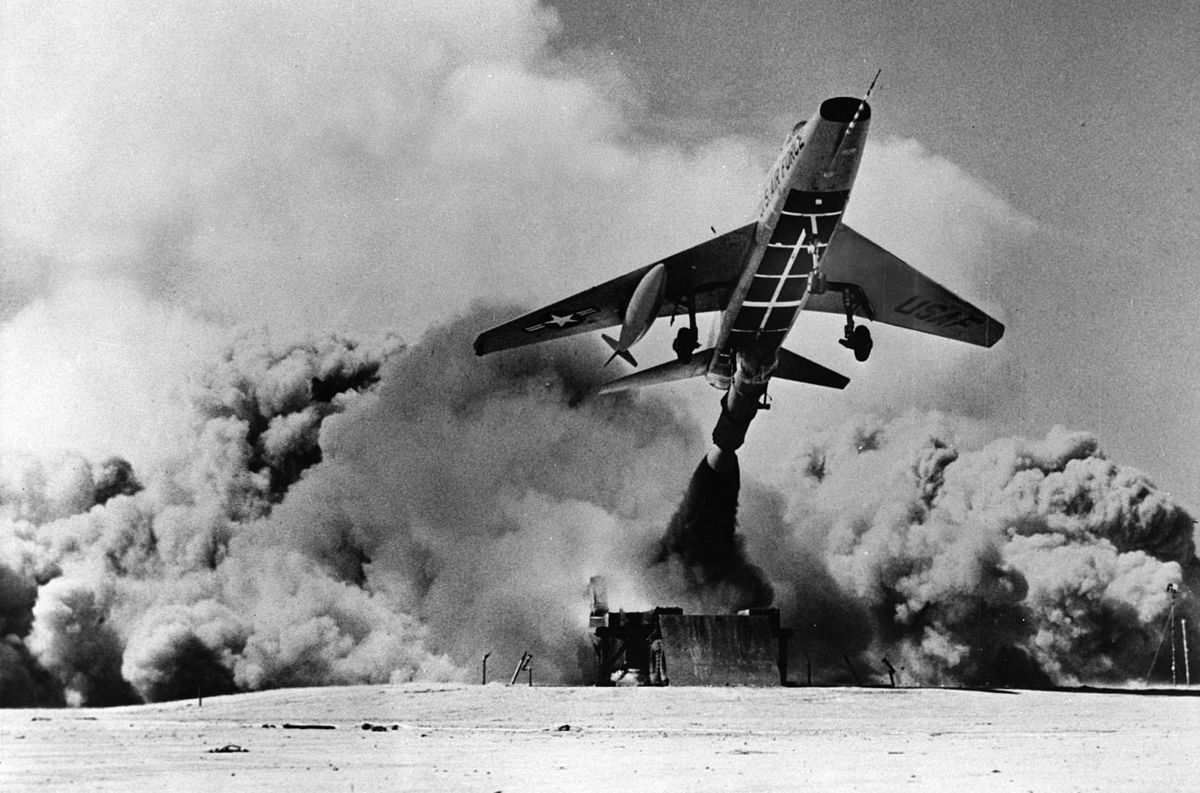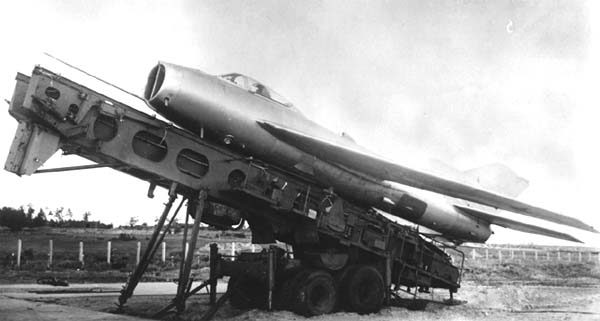Imagine you escorting a fleet of bombers attacking a NATO stronghold and your flight flies over a small open patch, then ZOOM! A squadron of fighters appear out of no where and begin to attack the bombers. All throughout the radio comms there's screaming, panicking, and complete mayhem. All the bombers were ether destroyed or damaged and you flight returns to you airbase in shock and awe.

The zero-length launch system or zero-length take-off system (ZLL, ZLTO, ZEL, ZELL) was a system whereby jet fighters and attack aircraft were intended to be placed on rockets attached to mobile launch platforms. Most zero length launch experiments took place in the 1950s, during the Cold War. The primary advantage of a zero-length launch system is the elimination of the need for a vulnerable airfield for takeoffs. In the event of a sudden attack, air forces could field effective air defenses and launch airstrikes even with their own airbases destroyed. Although launching aircraft using rocket boosters proved to be relatively trouble-free, if aircraft were required to land at the same base, a runway was still required.
The United States Air Force, the Bundeswehr's Luftwaffe, and the Soviets' VVS all conducted experiments in zero-length launching. The first manned aircraft to be ZELL-launched was an F-84G in 1955. The Soviets' main interest in ZELL was for point defense-format protection of airfields and critical targets using MiG-19s. The American tests with the F-84s started with using the Martin MGM-1 Matador solid-fuel boost motor of some 240 kilonewton (52,000 lbf) thrust output, which burned out seconds after ignition and dropped away from the manned fighter a second or two later; the larger F-100 Super Sabre and MiG-19/SM-30 "Farmer" tests (with the SM-30 using the Soviet-design PRD-22R booster unit) used similar short-burn solid fueled boost motors, of much more powerful 600 kN (135,000 lbf) thrust-class output levels. All works upon ZELL aircraft were abandoned due to logistical concerns and the increasing efficiency of guided missiles.


Manned aircraft involved in ZELL testing
Republic F-84G Thunderjet
North American F-100D Super Sabre
Lockheed F-104 Starfighter
Mikoyan-Gurevich MiG-19 SM-30 "Farmer"
North American XF-108 Rapier - (aircraft program cancelled)
Avro Canada CF-105 Arrow - (aircraft program cancelled)
The desire to field combat aircraft without depending on vulnerable landing strips also motivated development of aircraft capable of vertical (VTOL) or short (STOL) takeoffs or landings. Examples of these include British Hawker Siddeley Harrier, Soviet Yak-38 (both serially produced)
 Author
Topic: Zero length launch (Read 2407 times)
Author
Topic: Zero length launch (Read 2407 times)


